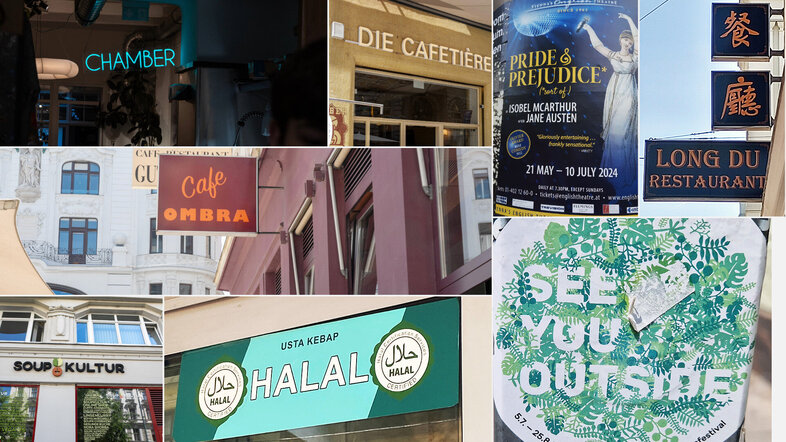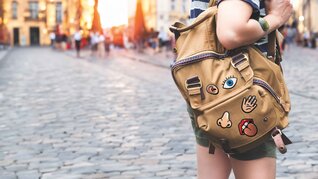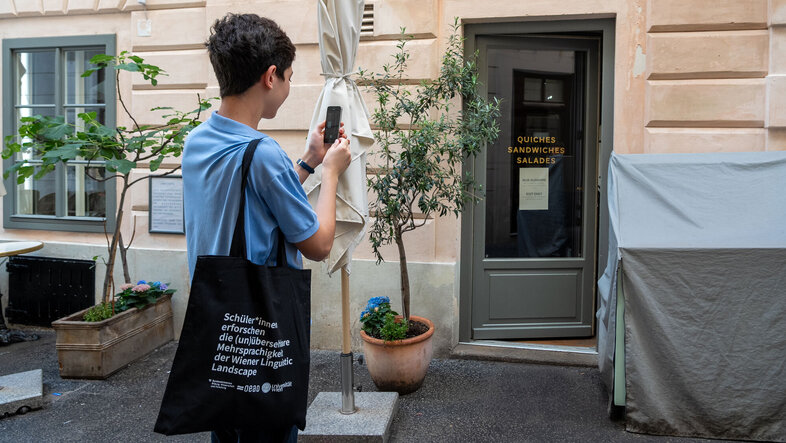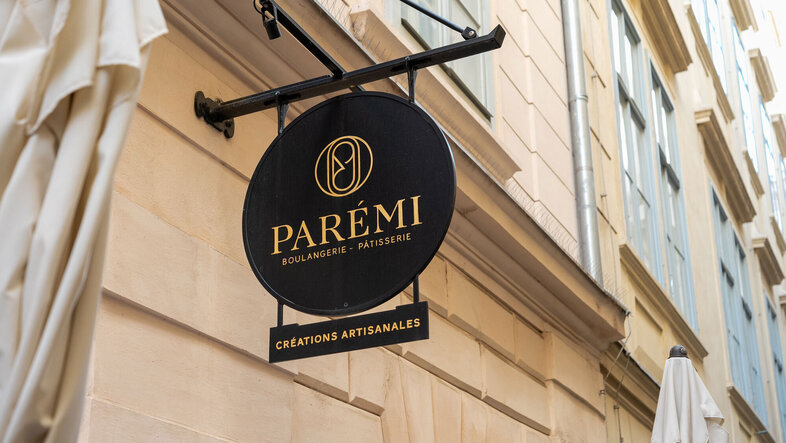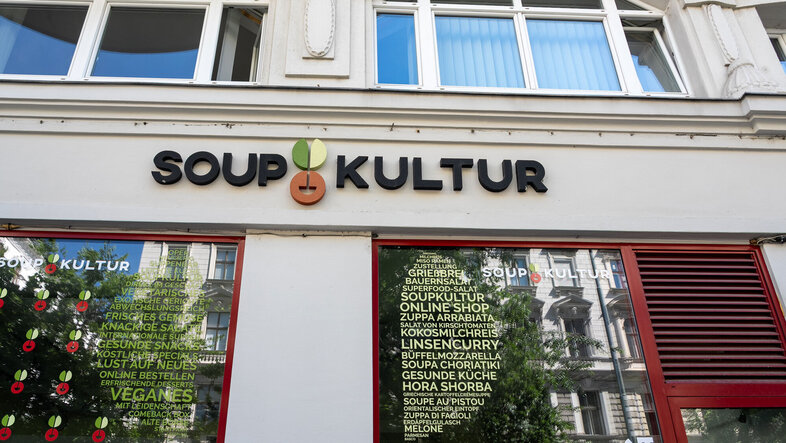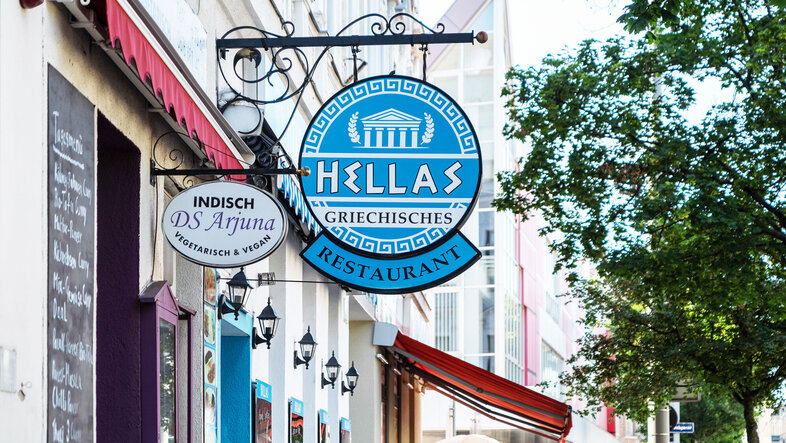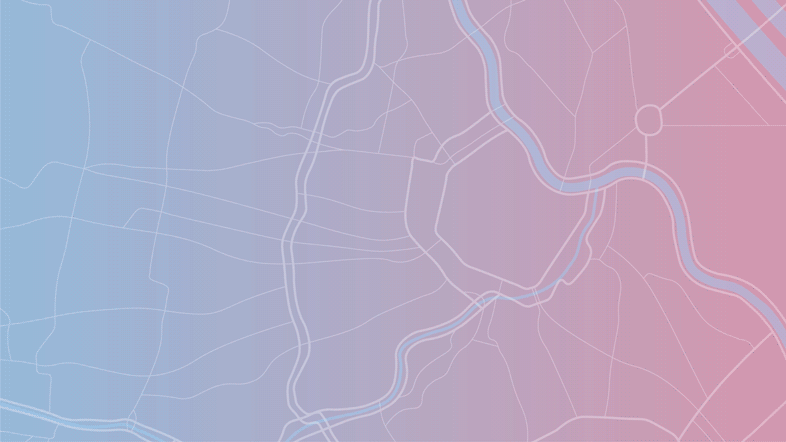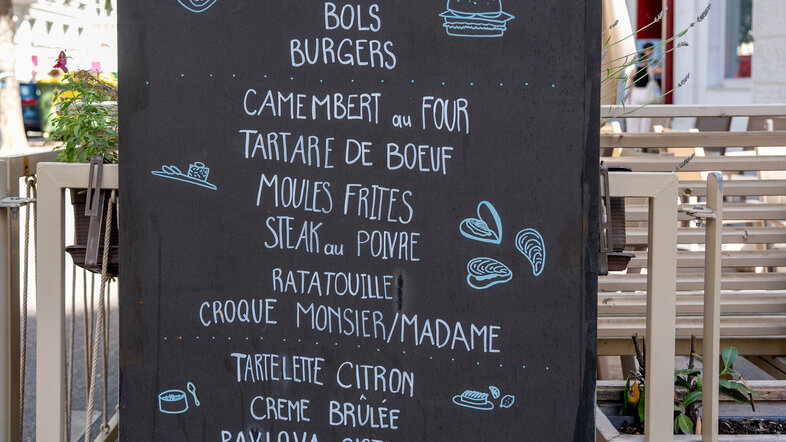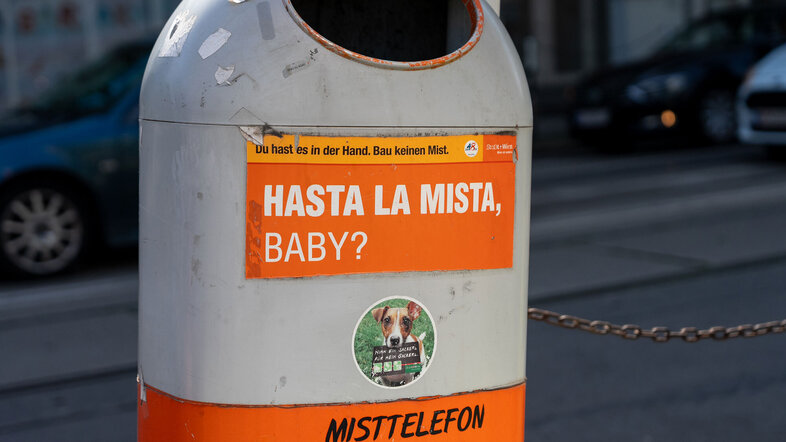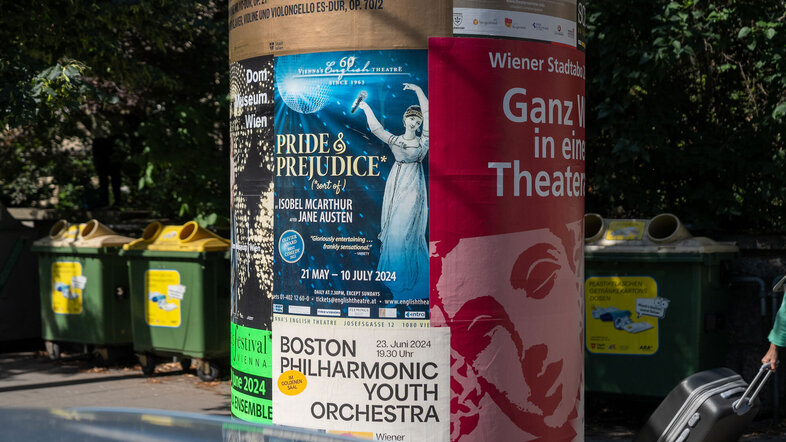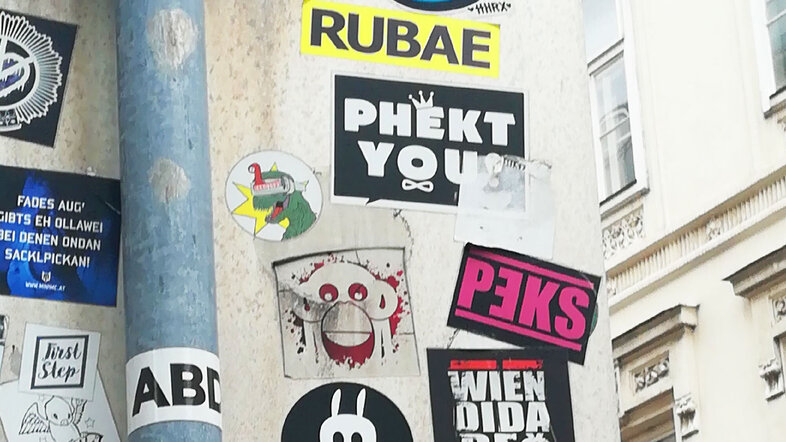On a language tour through Vienna
Come along on our Summer City Trip!
If you want to explore the diversity of Vienna's linguistic landscape on your own, our researchers Barbara Soukup and Elissa Pustka recommend the following route:
- City centre (Innere Stadt): here, in addition to English, other tourist languages such as French and Italian dominate, for example on the menu boards and menus in the numerous cafés and restaurants. What associations and emotions do you connect with which languages?
- Josefstädter Straße: In this important shopping street, pay attention to the shop signs and boutique displays, but also to stickers on lampposts and the like.
- Brunnenmarkt: Stroll through the market, discover the presence of languages of origin such as Arabic and listen to the "soundscape" of these languages.
How to get the GPS track:
Download the GPX file below to your smartphone and import it into the navigation app of your choice, such as Komoot. Here you can find instructions for importing it into Komoot.
Enjoy your linguistic summer city trip!
Suggested route for your language walk through Vienna
Rudolphina: What is a ‘linguistic landscape’, and which elements that can be found all over a city are part of it?
Barbara Soukup: There are various definitions of the term. In the project VisibLL, we focus on written language in public space. This includes things like official signs, advertisement posters, stickers, shop windows, menu boards, graffiti, manholes, etc.
But you can also use the term ‘linguistic landscape’ in a much broader sense. For example, there are also soundscapes, which refers to the languages that we hear around us, which often differ from the ones we see written. In private and semi-public places, we also have foodscapes, such as the language on food packaging. You can even investigate skinscapes – the linguistic diversity in tattoos, and much more. In this project, however, we focused on written language, such as on signs and walls, to ensure that the object of research is well-defined and clear for the students.
More about the Summer-Citytrip
In June, we cycled into the Danube floodplains and discovered human traces (in German).
In July, we will explore Vienna's (in)visible linguistic diversity and will join a Climate Walk to find out how our city and its people deal with heat islands.
In August, we will find out how oases in our neighbourhoods affect our well-being and hear the latest from space research while stargazing. Finally, we will immerse ourselves in the world of odours and find out what we can smell on our city trip.
Rudolphina: What is the project VisibLL about, and why did you choose the citizen science approach?
Barbara Soukup: From a linguistic perspective, the project aims to document heritage and foreign languages in the linguistic landscape of the city. We are mainly interested in finding out how citizens experience and contextualise this language use. How do the citizens, in this case high school students, navigate the linguistic landscape, how do they contextualise the multilingualism they encounter, how do they distinguish between different languages? In other words: if we tell them, "Take a photo of everything that is not German”, what do they take pictures of? We cannot answer this question without collaborating with regular citizens.
In addition, VisibLL has an important didactic aspect: we want to raise awareness and enhance the appreciation of multilingualism. On the one hand, this is beneficial for those students who are monolingual, as the project may help them experience multilingualism as something positive that they need not ”fear”. And they learn to critically reflect on the question of: why do you find certain languages in certain contexts in the public sphere, while others are not represented? What does this have to do with stereotypes and the social participation of certain groups of people?
And for multilingual students, exploring the linguistic diversity in the city is extremely important for their own identity. One student once reported back to us, "Ever since I discovered my own language in the city, the city has felt more like home." In a nutshell, this is exactly what we want to achieve. Furthermore, the students participating in the project learn to develop empirical research questions and to address them in their immediate environment.
Elissa Pustka: The citizen science approach also helps enable a very essential thing, which is a dialogue. We aim to bring academic research and the university as an institution closer to the people who do not feel at home in the academic world, for example, because they are not familiar with this background through their family. This way, we hope to remove barriers and counter scepticism towards science. For us, citizen science is so much more than collecting data together with volunteers.
Now it's your turn: Become a citizen scientist in the Vienna Linguistic Landscape
Have you found an interesting example of non-German language diversity in Vienna's Linguistic Landscape? For example, an Arabic shop sign, a French menu board, a cross-lingual pun? Feel free to take a snapshot and upload the photo to the Lingscape app. Become a citizen scientist yourself and support the research of Barbara Soukup and Elissa Pustka.
Here's how: Download the app to your smartphone in the app store of your choice, go to the settings and enter the following password: Rudolph1365
Your contributions will then be assigned to the VisibLL project.
The free smartphone app Lingscape from the University of Luxembourg was specially developed for citizen science projects that deal with the linguistic landscape and can be downloaded from app stores for iOS and Android.
The results of your linguistic explorations can be viewed in the public database after being reviewed by the researchers. Select the "VisibLLRudolphina" filter to do this. Happy researching!
Rudolphina: Why is it important to study the linguistic landscape?
Barbara Soukup: The linguistic landscape has many dimensions that are important and relevant for the Sustainable Development Goals of the United Nations, which aim to promote greater social cohesion. Examples are: "reduced inequalities”, "gender equality”, as well as "sustainable cities and communities”. We can use the linguistic landscape as a gauge of how we are doing with regard to all of these areas. If you look at how many of the streets in Vienna are named after men and how many are named after women, you will notice a substantial inequality. The share of streets named after women has only recently started to increase, mostly in the newly developed neighbourhoods. Also, the linguistic landscape reflects very clearly the use of the public sphere, i.e., who frequents public places and who does not.
Moreover, you can see which societal discourses are present in the public sphere, and what kinds of messages are used to shape them. For example, just think of the wide range of notes and warning signs, floor markings, stickers, graffiti, banners, etc. put up during the COVID-19 pandemic. You can still see the remainders today. The linguistic landscape tells us a lot about the state of a society.
Elissa Pustka: And from a didactic perspective, we know that, when learning a foreign language, it is super important to engage with authentic language use. Unfortunately, there are fewer and fewer school trips and exchange programmes. In cities, at least, you can compensate for that a little by going outside and exploring the linguistic diversity in the immediate environment. "Learning foreign languages on your doorstep,” is the motto we want to promote.
Rudolphina: Can you already tell us something about the results of your research?
Elissa Pustka: The students expected to find a lot of the so-called heritage languages, such as Turkish, Bosnian-Croatian-Serbian, Arabic. To their surprise, their field research showed that, outside of German, English is the dominant language in the Viennese shopping streets. Almost three quarters of the non-German linguistic artifacts contained some English. This was regardless of where they went. In second and third place were Italian and French. This is of course due to the gastronomy and fashion industry. All other languages occurred less often in comparison.
Rudolphina: Fascinating! If I want to explore the linguistic landscape of Vienna on my own this summer, where do I go? Do you have tips for a tour of the city?
Elissa Pustka: Certainly! I believe that many Viennese people do not know many of the areas in the 1st district all too well, but the city centre has a lot to offer from a linguistic perspective. So, why not take a tour of the coffee houses in the first district and explore your own city as a tourist? But it can be just as fascinating to roam the Brunnenmarkt market area. If you want to explore Little Paris in Vienna, take a stroll around the Lycée Français in the 9th district. It is a small French enclave in Vienna, home to an école de danse, a boulangerie, ... But save this for autumn, when the school kids are back. For this summer, I would suggest that you start at Stephansplatz and stroll through the city centre before traversing the 8th district along Josefstädter Straße.
Barbara Soukup: ... where you typically find a very high density of stickers, which is also very interesting. In general, the 8th district offers a lot to explore.
Elissa Pustka: And then continue on to the Brunnenmarkt in the 16th district. This tour allows you to see the languages typical of tourist areas, and to explore the discrepancy between the languages you see and the languages you hear, especially in places like the Brunnenmarkt.
Rudolphina: Great! Thank you very much for the interview.
What is citizen science?
Citizens can support research by donating data and by working on academic projects together with researchers. In projects of a higher participatory character, participants even develop research questions themselves. This also applies in the case of the project VisibLL, one of hitherto only few citizen science projects in the humanities and social sciences. Here is a link to the citizen science projects at the University of Vienna.
